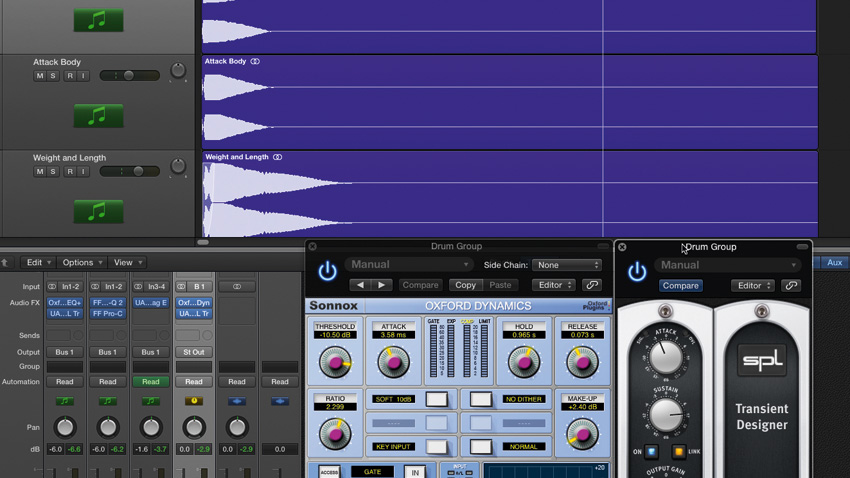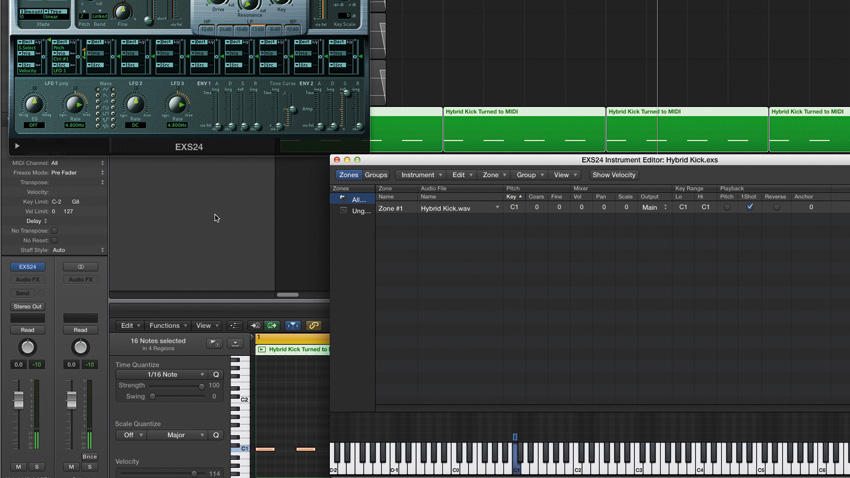How to construct a hybrid kick drum
Learn how to fuse sounds for a kick drum that's greater than the sum of its parts

We've all been through the routine of auditioning kick drums, trying one sample after another in the search for that 'perfect' one-shot solution to our track's low-end needs. We've also all suffered that frustration of finding a sound that attacks well but then decays badly, or that lacks adequate punch at the front but provides a pleasing tail as it fades out.
In this walkthrough, we're going to explore some of the tools you can use to create hybrid kicks, taking the best bits of different sounds to produce a combined solution that delivers a result matched to the specific needs of the track. Sample editing, envelope shaping, transient design, EQ and compression are just some of the processes that can be called on, but, as ever, being creative in the ways in which you use them will yield the best results.
Read Future Music's Essential Guide to Kick Drums in issue 268, which is on sale now.

Step 1: We start by sourcing three drum sounds that we think have the potential to work well together. These come from Battery 4, Rob Papen's Punch and Sonic Academy/Nicky Romero's Kick synth, respectively. To allow full editing, we bounce each down as an audio file separately.

Step 2: The first kick, from Battery 4, starts late, so we move the start point. Each kick is labelled with the role we'd like it to play. We EQ this first kick to enhance its depth, then stretch its length using a transient designer to boost sustain level.

Step 3: The second kick sound will provide the higher-frequency 'spank' with its nice, bright attack portion. However, like lots of kicks, the pitch 'sucks down' into sub frequencies we don't need. EQ rolls these out, and hard compression accentuates the punch.

Step 4: Kick 3 provides length but has an unwanted bright attack and could do with lengthening. We add a curved 40ms fade-in to smooth out the attack, then apply volume automation to boost the level as the sound fades. EQ tames the sub frequencies.
Want all the hottest music and gear news, reviews, deals, features and more, direct to your inbox? Sign up here.

Step 5: All three kicks sound much better now, with their roles clearly defined. We send them all to the same auxiliary output for processing together, applying a Sonnox compressor to add a little extra punch, and a transient designer to tighten the attack and lengthen the sustain.

Step 6: Finally, we can bounce our hybrid kick sound down as a stereo audio file, ready to use as a fresh sample. Once captured as an audio file, it's dragged into a sample editor and assigned to note C1 as a one-shot hit.
Future Music is the number one magazine for today's producers. Packed with technique and technology we'll help you make great new music. All-access artist interviews, in-depth gear reviews, essential production tutorials and much more. Every marvellous monthly edition features reliable reviews of the latest and greatest hardware and software technology and techniques, unparalleled advice, in-depth interviews, sensational free samples and so much more to improve the experience and outcome of your music-making.
